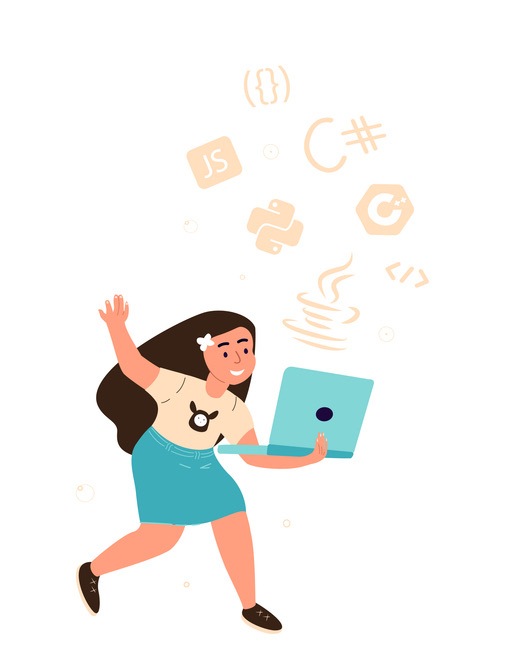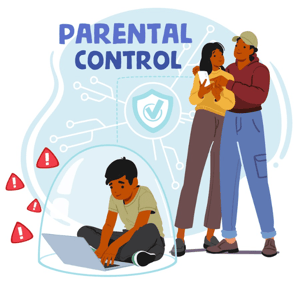Welcome to the exciting world of Java programming! Are you ready to embark on a coding adventure that will open up a universe of possibilities for your child? Java, one of the most popular and versatile programming languages, is an excellent starting point for young coders. This beginner’s guide will take you through everything you need to know about introducing your child to Java. From understanding the basics to discovering fun ways to learn, we’ve got you covered. So, let’s dive in and see why Java could be the perfect coding language for your kid’s first steps in programming.
Table of Contents
What is Java?
Java is a powerful and widely-used programming language that has been around since the mid-1990s. Developed by Sun Microsystems, Java is designed to be simple, reliable, and easy to use. It’s known for its “write once, run anywhere” capability, meaning that code written in Java can run on any device that has a Java Virtual Machine (JVM). This makes Java incredibly versatile, allowing it to be used for a variety of applications, from mobile apps and web development to large-scale enterprise systems.

But what exactly does Java do? At its core, Java is an object-oriented language, which means it organizes code around objects rather than actions. This approach mirrors the real world, making it easier to understand and use, especially for beginners. Kids learning Java can quickly grasp key programming concepts like variables, loops, and conditional statements through hands-on practice.
One of the reasons Java is so popular is its robustness. It has a strong memory management system, automatic garbage collection, and a rich set of APIs (Application Programming Interfaces) that simplify complex tasks. Plus, Java’s syntax is clear and readable, which helps new coders learn faster and with less frustration. By starting with Java, kids can build a solid foundation in programming that will benefit them as they explore more advanced topics in the future.
Related Reading: Java vs. Javascript | What’s the Difference?
Why Should Kids Learn Java?
There are numerous reasons why learning Java can be a fantastic choice for kids. First and foremost, Java’s widespread use in the tech industry means that skills learned today can open doors to exciting career opportunities in the future. Java is used by major companies like Google, Amazon, and Netflix, making it a valuable skill in the job market.
Java also helps develop critical thinking and problem-solving skills. When kids learn to code in Java, they’re not just memorizing commands; they’re learning how to think logically and break down complex problems into manageable steps. This kind of thinking is beneficial beyond coding, enhancing their performance in other subjects like math and science.

A study by the University of Texas found that students who engaged in coding activities showed a 15% improvement in problem-solving skills and a 12% increase in logical thinking abilities. These skills are transferable to various academic and real-world scenarios, giving kids a strong foundation for future learning.
Moreover, Java’s community is vast and supportive. There are countless resources available, from online tutorials and forums to coding camps and clubs. This means that kids can find help and inspiration easily, making their learning journey more enjoyable and less isolating.
Basics of Java Programming
Getting started with Java programming might seem daunting at first, but breaking it down into fundamental concepts makes it more manageable and fun. Java’s syntax is straightforward and beginner-friendly, making it an ideal first language for kids.
Java is an object-oriented programming language, which means it focuses on creating objects that contain both data and methods. This approach mirrors real-life objects, making it easier for beginners to grasp.
Key Concepts of Java
Understanding the basics of Java involves getting familiar with a few key concepts:
- Variables: Variables are used to store data that can be used and manipulated throughout the program. For example, int age = 10; declares an integer variable named age with a value of 10.
- Data Types: Java has several data types, such as int (integer), float (floating-point number), char (character), and boolean (true/false).
- Operators: Operators are symbols that perform operations on variables and values. Common operators include + (addition), – (subtraction), * (multiplication), and / (division).
- Control Structures: These are used to control the flow of a program. Examples include if-else statements for decision making and loops (for, while) for repeating actions.
- Methods: Methods are blocks of code that perform specific tasks and can be reused throughout the program. They help organize code into manageable sections.
- Classes and Objects: Classes are blueprints for creating objects. An object is an instance of a class. For example, a Car class might define what a car is, while myCar would be an object of that class.
By understanding these concepts, kids can start writing simple Java programs. Here’s a basic example of a Java program that prints “Hello, World!” to the screen:

In this example, public class HelloWorld defines a class named HelloWorld. The main method is the entry point of any Java program, and System.out.println(“Hello, World!”); prints the text to the console.
Starting with small, manageable projects helps kids build confidence and gradually take on more complex challenges. Understanding these basics will set a strong foundation for exploring more advanced Java programming concepts in the future.
Related Reading:
How Games Can Teach Your Child about Coding
Best Coding Apps for Teaching Kids Tech Skills
Getting Started with Java
Embarking on the journey of learning Java begins with setting up the right environment and understanding the basic tools you’ll need. Fortunately, getting started with Java is straightforward, and there are plenty of resources available to help.
Setting Up Your Development Environment
Before writing any Java code, you need to set up a development environment. Here are the steps to get you started:
- Install the Java Development Kit (JDK): The JDK includes the tools necessary to write and run Java programs. You can download the latest version from the Oracle website. Follow the installation instructions for your operating system.

- Choose an Integrated Development Environment (IDE): An IDE is a software application that provides comprehensive facilities to programmers for software development. Popular IDEs for Java include Eclipse, IntelliJ IDEA, and NetBeans. These IDEs come with features like syntax highlighting, code completion, and debugging tools.
- Set Up Your IDE: Once you’ve installed your IDE, you’ll need to configure it to use the JDK you installed. Most IDEs have a setup wizard that guides you through this process.
Writing Your First Java Program
With your environment set up, you can write your first Java program. Here’s a step-by-step guide:
- Open Your IDE: Launch the IDE you installed.
- Create a New Project: Start a new Java project. In Eclipse, for example, you can do this by selecting File > New > Java Project.
- Create a New Class: Within your project, create a new Java class. Name it something like HelloWorld.
- Write Your Code: Enter the following code into your new class:

- Run Your Program: Most IDEs have a “Run” button that will compile and execute your program. Click it to see your program in action.
But if your child encounters difficulty with these steps, that’s perfectly fine—no need to get frustrated. Learning to code is a journey, and it’s normal to face challenges along the way. For such cases, there are many useful resources and tools that can help in learning the Java language.
Resources and Tools for Learning Java
When it comes to learning Java, having access to the right resources and tools can make a significant difference. Here are some of the best resources and tools to help kids learn Java effectively.
Online Courses and Tutorials
- CodaKid: At CodaKid, we offer a variety of courses tailored specifically for kids who are eager to dive into the world of coding. Our engaging and interactive Java courses are designed to make learning fun and effective.
- Codecademy: Codecademy offers an interactive Java course that is perfect for beginners. The platform provides step-by-step instructions and immediate feedback, making it a great starting point.
- Coursera: Coursera partners with top universities and organizations to offer Java courses. These courses often include video lectures, quizzes, and peer-reviewed assignments.
Books for Young Coders
Books can be a valuable resource for learning Java, especially for kids who enjoy reading and following along with examples. Some recommended books include:
- “Java: A Beginner’s Guide” by Herbert Schildt: This book provides a thorough introduction to Java, with clear explanations and practical examples.
- “Head First Java” by Kathy Sierra and Bert Bates: Known for its engaging and interactive approach, this book makes learning Java fun and accessible.
- “Java Programming for Kids: Learn Java Step by Step and Build Your Own Interactive Projects” by R. Chandler Thompson: This book is specifically designed for young learners, with projects that are both educational and entertaining.
Interactive Coding Platforms
Interactive coding platforms allow kids to practice Java programming in a hands-on way. Some notable platforms include:
- Minecraft: Minecraft isn’t just a game; it’s also a fantastic tool for learning Java. Through CodaKid’s Minecraft coding courses, kids can modify the game using Java, creating custom mods and adding new features. This approach makes learning Java incredibly engaging and fun.
- Scratch: While Scratch is primarily for block-based programming, it can be a good introduction to coding concepts before transitioning to text-based languages like Java.
- Repl.it: Repl.it is an online IDE that supports Java and allows kids to write, run, and share their code in a web-based environment. It’s great for practicing and collaborating on projects.
Community and Support
Joining a coding community can provide additional support and motivation. Online forums, local coding clubs, and hackathons are great places for kids to connect with other learners and experienced programmers. Websites like Stack Overflow, GitHub, and Reddit have active communities where questions can be asked and answered, and projects can be shared.
In summary, there are abundant resources and tools available to help kids learn Java. Whether through structured courses, interactive platforms, or supportive communities, young coders have a wealth of options to explore and grow their programming skills.
Related Reading:
Coding for 14-Year-Olds – The Ultimate 2024 Guide
Top 5 Tips for Parents on How to Protect Your Kids Online
Practical Applications of Java
Learning Java opens up a world of possibilities for kids, allowing them to apply their coding skills to various real-world projects. Java’s versatility and widespread use mean that the skills your child develops can be put to use in many exciting and practical ways.

Building Mobile Apps
One of the most popular applications of Java is in mobile app development. Java is the primary language used for developing Android apps, which power millions of devices worldwide. By learning Java, kids can create their own mobile apps, bringing their ideas to life and sharing them with friends and family. Imagine your child designing a game, a productivity tool, or even an educational app that others can download and use!
Creating Games
Java is also widely used in game development. Kids can learn to create simple games like tic-tac-toe or more complex ones with graphics and user interactions. Many popular games, such as Minecraft, have been developed using Java. Through game development, kids can explore their creativity, develop problem-solving skills, and have a lot of fun in the process.
Developing Web Applications
Java is a powerful tool for web development. It is used to create dynamic and interactive web applications. With frameworks like Spring and JavaServer Faces (JSF), kids can learn to build robust and scalable web applications. This can be a great way for them to understand how websites work and even create their own personal or project-based sites.
Robotics and IoT
Java is used in the world of robotics and the Internet of Things (IoT). Kids can program robots to perform specific tasks or create IoT projects that connect various devices. For instance, they can develop a program to control a robot’s movements or build a smart home system that automates lighting and security. These projects can be both educational and incredibly rewarding.
Enhancing School Projects
Java programming skills can be a huge asset for school projects. Whether it’s creating a simulation for a science class, developing a program to solve math problems, or building an educational game for a history presentation, Java can help kids stand out in their academic work. It provides a practical way to apply what they’ve learned in a classroom setting to real-world scenarios.
Participating in Coding Competitions
Many coding competitions and hackathons include Java as a language option. By learning Java, kids can participate in these events, which can be an excellent way to test their skills, meet other young programmers, and gain recognition for their coding abilities. Competitions often present unique challenges that require creative problem-solving, helping kids to further develop their coding prowess.
Tips for Parents

Supporting your child on their journey to learn Java can be incredibly rewarding. Here are some practical tips for parents to help their kids succeed in coding:
Foster a Positive Learning Environment
Creating a conducive learning environment at home is crucial. Ensure your child has a quiet, comfortable space to code, free from distractions. Encourage regular breaks to avoid burnout and keep the learning process enjoyable.
Encourage Exploration and Creativity
Coding is as much about creativity as it is about logic. Encourage your child to explore different projects and come up with their own ideas. This will help them stay engaged and motivated.
Be Patient and Supportive
Learning to code can be challenging, and it’s normal for kids to encounter difficulties along the way. Be patient and offer support when they face obstacles. Celebrate their successes, no matter how small, to build their confidence.
Set Realistic Goals
Help your child set achievable goals to keep them motivated. Breaking down the learning process into smaller, manageable tasks can make it less overwhelming and more rewarding. Celebrate milestones to keep their spirits high.
Engage with Their Learning
Take an active interest in what your child is learning. Ask them to explain what they’re working on and show enthusiasm for their projects. This not only reinforces their understanding but also shows them that you value their efforts.
Provide Real-World Context
Show your child how Java is used in real-world applications. Whether it’s developing apps, creating games, or programming robots, connecting their learning to real-world scenarios can make the process more exciting and relevant.
Encourage Collaboration
Encourage your child to collaborate with peers on coding projects. Working in teams can enhance their learning experience, improve their problem-solving skills, and make coding more enjoyable.
Keep Learning Fun
Remember, the ultimate goal is to keep learning fun and engaging. Use games, puzzles, and creative projects to teach coding concepts in an enjoyable way. The more fun your child has, the more likely they are to stick with it.
In summary, by fostering a supportive and encouraging environment, utilizing available resources, and engaging actively with your child’s learning, you can help them succeed in their journey to learn Java. These tips can make the process more enjoyable and effective, setting your child up for success in the world of coding.
Ready to Start Your Java Journey?
Learning Java can be a transformative experience for kids, opening up a world of creativity, problem-solving, and future opportunities. From understanding the basics to exploring practical applications, Java provides a solid foundation for young coders to build on. With the right resources and support, your child can embark on an exciting journey into the world of programming.
At CodaKid, we’re committed to making this journey as engaging and accessible as possible. Our courses are designed to be fun, interactive, and educational, ensuring that kids not only learn to code but also enjoy the process. Whether your child is interested in developing mobile apps, creating games, or exploring robotics, our Java courses offer something for everyone.
Ready to get started? Sign up today and enjoy free access to our courses for 14 days. Give your child the tools they need to succeed and watch them thrive in the world of coding. Visit our course catalog to begin your Java journey now!
Happy coding!

















